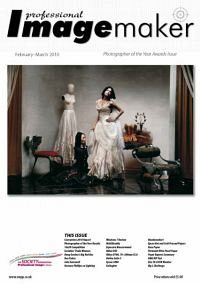articles/Paper/endofterm-page7
Great Paper End of Term Report - part 7 of 1 2 3 4 5 6 7 8 9
by Mike McNamee Published 01/02/2010
Some gems from the web:
"It concludes that consumers are being routinely misled about the efficacy of low energy light bulbs, or compact fluorescent bulbs as they are technically known. "There is a big difference between what most bulbs' packaging promises and what the reality is. It's no wonder so many consumers are dissatisfied with the bulbs," said Dickon Ross, the editor of E&T"
"Meanwhile, the US Department of Energy tested 124 bulbs for 2,400 hours - far less than the 10,000 hours that most energy-saving bulbs are meant to last. It found that 28 per cent had stopped giving out adequate light by this stage."
By now you need some advice if you wish to equip your office or studio. As ever, more expenditure equals higher light quality, it also means higher energy consumption - the high light-quality tri-phosphor CFLs pump out less light-per-watt and cost more. For many people a daylight viewing environment is too 'cold' to work in, so it might be better to have a small, specific area for critical print judging which is lit by daylight, high rendering index bulbs (eg D65 with a CRI of at least 80, preferably 95). You will not get a grain of sense out of the likes of B&Q and so you are better visiting www.lightbulbsdirect.co.uk. They know about lights and are competitive on price. Your main issue with print viewing is metamerism and colour inconstancy so be alert to the issues before your client rings up to complain!
Another influence is the base white of the paper. The use of optical brightening agents gives a print a bit more 'pop' at the expense of absolute colour precision. The cooling effect of an OBA drags the skin tones towards the base white (which is blue) effectively reducing their saturation (adding blue to what is essentially a red reduces the contrast, ie desaturates) as well as rotating the skin tone towards red-magenta. Such effects are reflected in poor skin tone errors, an integral part of our auditing colour set.
A generalised finding is that the deep blue of the Macbeth Chart most frequently carries the highest error of the data set and that the errors of the white patch and purple patch of the Macbeth Chart also carries a high error. In contract proofing the white is dealt with by having a base paper white that is higher than required and toning it down slightly with a couple of per cent of colour by means of the 'absolute colourmetric' rendering intent which 'mimics paper white'. This results is a slight loss of contrast in the print - inkjet prints are usually brighter than a printed page and so we tend to accept the error along with a print with more punch. Overall there is no pattern to the make-up of the errors in a colour, they are evenly distributed between lightness, saturation and hue. The presence of a high error in the deep blue is likely to be because it is the only colour that is out of gamut.
The neutrality of the greys is a vital characteristic of a good print, indeed contract proofing places more stringent demands on the grey test patches than other colours in the gamut. For fine art and inkjet printing in monochrome there is little to beat the Epson Advanced Black and White driver (ABW). This works by substantially reducing the use of cyan and magenta inks (the 'strong colourants') so that there is less scope for the neutrals to be inadvertently biased. We also find that higher Dmax values are obtained off this driver (from 2.16 full colour rising to 2.5 on ABW on a lustre paper and from 1.6 rising to 1.65 on a matt paper).
The histogram shows the errors from 3800 printer tests (on dozens of papers) arranged as a normal distribution. What the graph tells us is that the average error is a little over 3.0 and that occurrences of more than 4.5 and less than 2.5 are quite rare. This probably represents the limits for today's printing technology and drivers, the only way to lower the values yet further is with specialist RIPs (raster image processors) and very careful tuning of the output. This is required for contract proofing but rather too good (and expensive) for run-of-the-mill professional output.
Since the bulk of this end-of-term report was compiled we have had the opportunity to fully test the GMG ColorProof RIP and the spectacular data is fully revealed in the following pages. If it is absolute precision of colour that you require you need look no further although you will need slightly deeper pockets.
Please Note:
There is more than one page for this Article.
You are currently on page 7
- Great Paper End of Term Report page 1
- Great Paper End of Term Report page 2
- Great Paper End of Term Report page 3
- Great Paper End of Term Report page 4
- Great Paper End of Term Report page 5
- Great Paper End of Term Report page 6
- Great Paper End of Term Report page 7
- Great Paper End of Term Report page 8
- Great Paper End of Term Report page 9
1st Published 01/02/2010
last update 09/12/2022 14:53:49
More Paper Articles
There are 0 days to get ready for The Society of Photographers Convention and Trade Show at The Novotel London West, Hammersmith ...
which starts on Wednesday 15th January 2025





